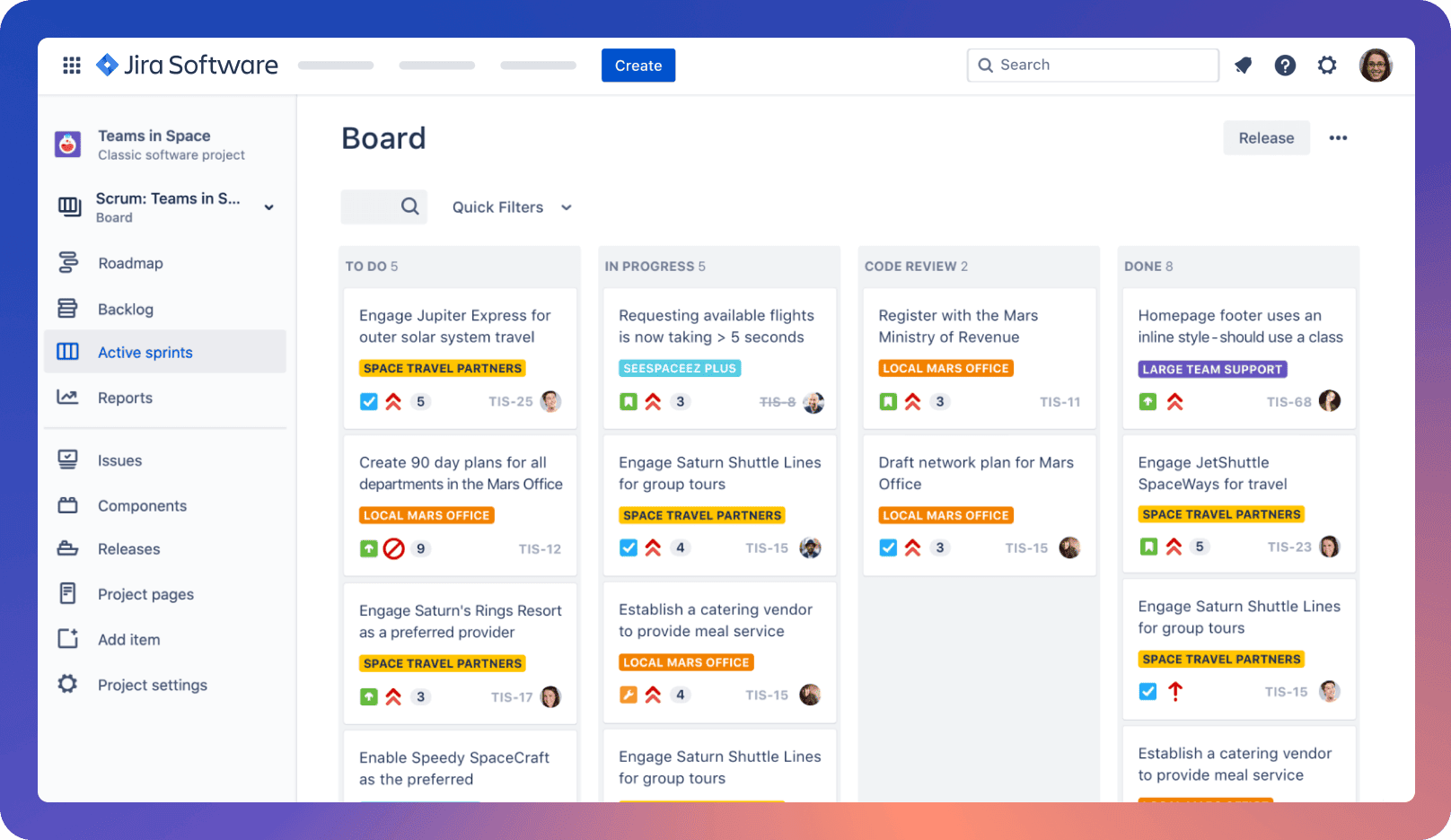What is JIRA Software

JIRA is a widely used software tool developed by Atlassian for project management, issue tracking, and bug tracking. It is highly versatile and is often utilized in agile software development environments. Here are some key aspects of JIRA:

1. Purpose and Use Cases
- Issue Tracking: JIRA is primarily used for tracking bugs, tasks, and other issues in software development projects.
- Project Management: It helps teams plan, track, and manage their projects and workflows.
- Agile Development: JIRA supports agile methodologies, including Scrum and Kanban, making it a popular choice for agile teams.
2. Core Features
- Boards: JIRA provides Scrum and Kanban boards to visualize workflows and manage tasks.
- Backlogs: Teams can maintain a backlog of tasks and prioritize them for future sprints or development cycles.
- Sprint Planning: JIRA allows teams to plan and manage sprints, assign tasks, and track progress.
- Custom Workflows: Users can create and customize workflows to fit their specific project requirements.
- Reports and Dashboards: JIRA offers various reporting tools and customizable dashboards to monitor project performance and team productivity.
- Permissions and Security: JIRA has robust permission settings to control access to projects, issues, and other resources.
3. Integrations
JIRA integrates with a wide range of other tools and services, including:
- Confluence: Another Atlassian product for documentation and collaboration.
- Bitbucket: For version control and code repository management.
- CI/CD Tools: Such as Jenkins and Bamboo.
- Other Third-Party Tools: Including Slack, Microsoft Teams, GitHub, and more.
4. Customization
JIRA is highly customizable. Users can:
- Create Custom Issue Types: Define different types of issues such as bugs, tasks, stories, and epics.
- Define Custom Fields: Add additional fields to capture more specific information.
- Modify Workflows: Customize workflows to match the specific processes of the team or project.
5. JIRA Software vs. Other JIRA Products
- JIRA Software: Tailored for software development teams with features supporting agile methodologies.
- JIRA Core: A more general project
management tool suitable for business teams.
- JIRA Service Management: Designed for IT service management (ITSM) and customer support, providing features like incident, problem, and change management.
6. User Roles and Permissions
JIRA supports various user roles with specific permissions:
- Administrators: Have full control over the configuration of JIRA, including projects, users, and system settings.
- Project Managers: Can manage project-specific settings, including workflows, permissions, and boards.
- Developers: Typically focus on issues and tasks assigned to them, updating statuses and providing progress reports.
- Users/Customers: Can create and track issues, often limited to specific projects or areas.
7. JIRA Cloud vs. JIRA Server/Data Center
- JIRA Cloud: Hosted by Atlassian, offering automatic updates, scalability, and easier setup. It’s suitable for teams that prefer not to manage their own infrastructure.
- JIRA Server/Data Center: Self-hosted versions that provide more control over data and infrastructure. The Data Center version is designed for large enterprises with high availability and performance needs.
8. Key Concepts
- Issues: The basic unit of work in JIRA, which can be a bug, task, story, or any other type of work item.
- Projects: A collection of issues, representing a distinct piece of work or initiative.
- Workflows: Define the states and transitions that an issue can go through during its lifecycle.
- Components and Versions: Help organize and manage issues within a project, where components represent subsections of a project and versions represent specific releases or milestones.
9. Agile Tools
- Scrum Boards: Facilitate sprint planning and tracking, showing the progress of tasks during a sprint.
- Kanban Boards: Provide a continuous flow view of tasks, helping teams manage work in progress and optimize workflows.
- Burndown Charts: Visualize the progress of work in a sprint, showing the amount of work remaining versus time.
- Velocity Charts: Show the amount of work completed in past sprints, helping predict future sprint performance.
10. Conclusion
JIRA is a powerful tool for managing projects, tracking issues, and supporting agile development. Its flexibility, extensive feature set, and integration capabilities make it a popular choice for teams of all sizes and industries. By providing a centralized platform for planning, tracking, and reporting, JIRA helps teams collaborate more effectively and deliver projects more efficiently.